I have been a specimen hunter since the age of 12, some 54 years on and specimen fishing still runs deep in my very make up. I have many friends who don’t have a clue what drives me and they often ask the simple question: “Why?”
I can answer that in just two words: Richard Walker!!
It was his weekly column in Angling Times throughout the 1950s and 1960s that first got me on the trail of big fish and the price pursuing monsters takes both on your time and, in some cases, on your sanity.
I am an all-rounder and, as such, chase big fish of all species but these days the very term ‘specimen hunting’ is now fraught with conjecture as the modern specimen hunter tends mostly to be a single species angler who to wants to label themselves as such. So we have carp angers, Tenchfishers, Chub Study Group lads, there’s the fanatical Eel Club, The Perchfishers, Barbel Catchers, The Catfish Conservation Group etc… the list is endless.
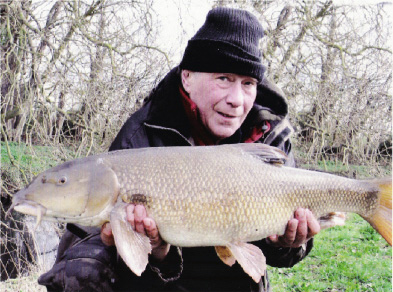 But to my mind they are all specimen hunters chasing the dream of that monster of a particular species, I happen to one of those who has chased the dream many times and for lots of different species at times even making it difficult for myself by using methods that are not the most effective for the species and giving my target fish a sporting chance of not being hooked.
But to my mind they are all specimen hunters chasing the dream of that monster of a particular species, I happen to one of those who has chased the dream many times and for lots of different species at times even making it difficult for myself by using methods that are not the most effective for the species and giving my target fish a sporting chance of not being hooked.
Chub immediately spring to mind and when I think back to all of the hours I have sat watching a Starlight grow dimmer on a cold winter’s night, holding a very soft quiver tip rod, hour after hour and then, when that bite has finally come, I’ve been too frozen to strike! Madness I know, but the true specimen hunter will fully understand!
Using the most effective way to convert bites into fish landed is often ridiculed by certain sections of the angling press and many using Internet forums but the very same people, who are often match fishermen or have their angling heritage in match fishing, now use hair rigs, sliding bolt rigs and pellets that are already made up on hooklinks to increase their overall weights at the end of a five hour match.
I will hold my hands up and admit that I was around when those first small, round balls (now known as boilies) were invented at Sutton-at-Hone and I still fish a lake not many miles away from home where much of the early work perfecting the hair rig took place.
Yes, specimen hunting has changed a great deal from its humble beginnings and it has got easier too; these days at least you don’t have to make the fishing tackle you require for specimen hunting, as you did in the early days.
But the time and effort to catch a target species or, in some cases, a target fish remains the same and it’s the thinking angler who will always ultimately succeed over and above the angler who just goes along to the shop and buys the ‘going tackle’ because that is what it said in the book or that is what his mate told him to buy. Good specimen hunters are usually thinking anglers, thinking outside the box, almost thinking like a fish and concentrating 100% on the species they have chosen to target.
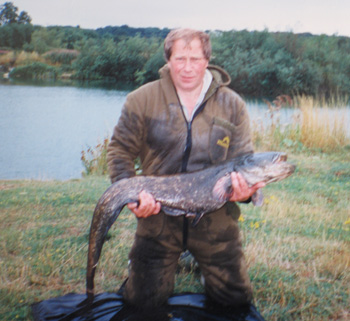 An example of this was 20 odd years ago when I got was into Wels Catfish and I was fishing an RMC Angling venue called Jones Pit near Heath and Reach. The cats had wised up to livebaits fished in the margins so we had to work out a way of fishing lives at distance. There was no point in trying to cast any distance with a livebait as it would be killed on impact, so we had to come up with something different.
An example of this was 20 odd years ago when I got was into Wels Catfish and I was fishing an RMC Angling venue called Jones Pit near Heath and Reach. The cats had wised up to livebaits fished in the margins so we had to work out a way of fishing lives at distance. There was no point in trying to cast any distance with a livebait as it would be killed on impact, so we had to come up with something different.
A friend of mine came up with an idea which became known as the Winch Rig; it involved the butt section of a spinning rod, being turned upside down on a couple of extra long rod rests, the fixed spool reel on this butt section was held upright with the bail arm open, the line on the reel simply had a length of tubing and a quick clip attached to it.
The main rod (at full length) was tackled up in similar fashion but had a free running 3 or 4oz lead on it, a buffer bead and another length of tubing and a quick clip link on the end.
The two clips were attached to one another and the trick was to angle the main rod to the butt of the spinning rod, making a V shape. You then cast out the main rod to your spot and as the heavy lead flew through the air so it pulled the line from the butt section of the spinning rod with it.
You could then wind in the spinning rod and have a line out running through the 4oz lead on the main rod and back to the bank. The butt section was then released from the main rod and you could simply attach your livebait on a polyball rigs via another quick clip.
This could then be wound out to the lead so your livebait was presented, without harm, at extreme range. From dusk to dawn the float was fished on the surface above the 4oz lead then, as dawn arrived, the baits could be wound down to fish lower depths.
In the early days the bites, when they came, were screamers, one toners, all you had to do was click over the Baitrunner and gently pull into the cat.
This edge was hard won and we took it upon ourselves to hide our secret method and we would not use the Winch Rig if there were other anglers around or we would restrict our use of it to after dark only. Can you imagine how hard that was at night?
The gear we used would be hidden at the back of our bivvies during the day and we kept our edge for a couple of season but, like all good things, nothing can be kept secret for long.
A couple of cats a season was normal in those days but with the Winch Rig at our disposal my fishing mate Chris and myself were getting up to ten runs a night and converting them into cats landed too, it was amazing fishing while it lasted.
The secret was, of course, that the cats felt safe to feed at a distance from the bank and fed readily at night, we had perfected the perfect way of presenting livebaits at a distance – oh happy days!
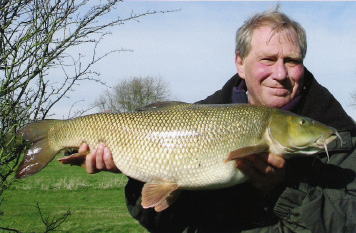 And so it was with many developments in specimen fishing, we were always looking for a way to outwit our chosen species and indeed at times other specimen anglers too.
And so it was with many developments in specimen fishing, we were always looking for a way to outwit our chosen species and indeed at times other specimen anglers too.
Some edges are small but significant, one such for me was the use of very long hooklinks, and it started when I was fishing for barbel on the River Lea at Fishers Green.
The ‘normal’ hooklength would be anywhere between one and two feet, but I wanted to fish my baits right under rafts of debris and would use up to four or five foot hooklinks. This meant fishing on your rods, with your hand on the butt. The running lead would be outside the snag and as soon as you got a take it was hit and hold fishing using balanced tackle that was up to the job. On many occasions I played a fish with my rod top bent down to the bottom of the river, feeling it grate along the river bed with every lunge of the barbel – exciting stuff!
It was on the River Ivel that I really started using very long hooklinks, anything up to 5 metres in length; it came about because I could see a shoal of barbel under a weeping willow tree and they had a big raft of debris above them.
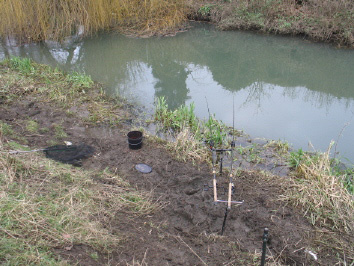 There were very big barbel under that tree, up to 15lb, but they were very spooky, if you could have fished the venue at night it would have been possible to draw them up into open water and catch them, but there was a no night fishing rule on the section so I had to get my baits to those barbel under the tree without spooking them, and I had to do it in daylight.
There were very big barbel under that tree, up to 15lb, but they were very spooky, if you could have fished the venue at night it would have been possible to draw them up into open water and catch them, but there was a no night fishing rule on the section so I had to get my baits to those barbel under the tree without spooking them, and I had to do it in daylight.
Firstly I rolled a lead under the raft to make sure none of the debris or hanging branches went to the bottom of the river. Once I was sure of this I paced out how far I had to get my bait under the raft to the shoal – it turned out to be 5m. The set up was simple: an inline feeder, a swivel and a very long length of 10lb mono line with a small but strong hook (size 16 Drennan Barbel Specialist). Along the hooklink I lightly pinched on BB shot so that the rig would straighten out along its length but stay on the bottom – I called it the ‘Swinger Rig’.
By employing this rig I could keep the feeder upstream of the tree and the raft of rubbish; the tip of the rod was underwater, as near the bottom as I felt safe, and I used a single front buzzer as extra indication for when a bite came.
On the part of the Ivel I was fishing it has a high bank which meant that with a 12ft rod once the barbel was outside the snag by holding the rod high I could easily net the fish safely.
My usual bait in this situation is maggots, lots of them, spiced up with powdered Tandoori Masala – a very effective additive to all barbel baits.
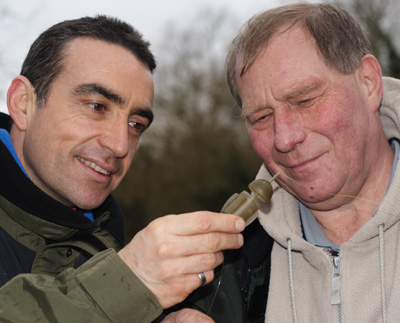 One morning I arrived at first light droppered a couple of pints of maggots into the swim and waited for it to settle. I had the best part of a gallon of maggots with me and to start with I did not bother with a hooklink at all; I just kept the maggots going in via the feeder. After an hour or so I added the 5m hooklink, lowered the link into the water upstream of the tree, and allowed the current to straighten it under the tree.
One morning I arrived at first light droppered a couple of pints of maggots into the swim and waited for it to settle. I had the best part of a gallon of maggots with me and to start with I did not bother with a hooklink at all; I just kept the maggots going in via the feeder. After an hour or so I added the 5m hooklink, lowered the link into the water upstream of the tree, and allowed the current to straighten it under the tree.
It was not long before the first bite came; I was sitting right by the rod holding the handle and on this particular occasion I was using a centrepin, although I often use Baitrunners if the current is too strong to for the strongest of centrepin ratchets. Don’t let the centrepin purists kid you that they are the be all and end all of reels, they have their place and I like using them, but there are many claims made for these reels that are just untrue!!
This first barbel was a single of about 8lb, the next one went about 5lb, then I had a double. I kept the maggots going in and by 11.30am I had had 13 barbel, four of them were over 10lb, the biggest 12lb 8oz, and in amongst them were some nice chub and a chub/bream hybrid.
I rang my daughter who lives nearby to come to the river to take some photos but sadly I ran out of maggots by 12 o’ clock and did not want to pack up and go the tackle shop to get more but if I had I’m sure I would have continued catching barbel!!
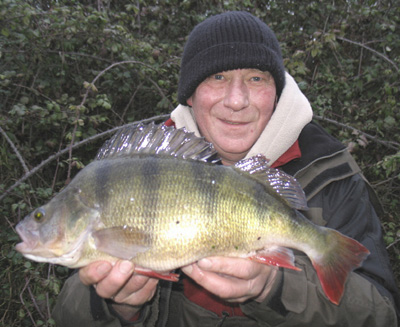 This long hooklength technique is an undoubted edge and a ploy I still use successfully – in fact the last barbel I caught; a 15lb 2oz fish from the Lea came to exactly the same method.
This long hooklength technique is an undoubted edge and a ploy I still use successfully – in fact the last barbel I caught; a 15lb 2oz fish from the Lea came to exactly the same method.
Every species has its secrets: One little one to end with – when perch livebaiting in cold weather why not try two small baits on a single hook? This accounted for my 4lb 2oz perch after the last freeze up in 2010 when the there was only a small patch of clear, unfrozen water.
Often the dream of a monster becomes reality by making tiny changes in rigs or presentation and thinking outside of the normal way of doing things.










